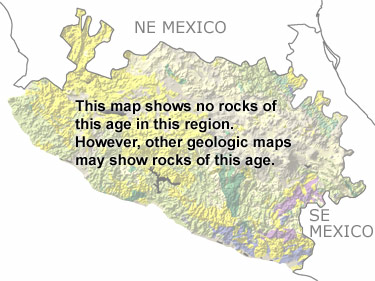

The Carboniferous in Southwest region, Mexico |
|||||||||||||||||||||||||||||||||||||||||||||||||||||||||||
|
|||||||||||||||||||||||||||||||||||||||||||||||||||||||||||
Paleontology and geologyIn the Carboniferous, the sedimentary and igneous rocks that had accumulated off the coast of Gondwana were brought closer to their present position in the eastern part of this region. As Gondwana and Laurentia began to collide to form the supercontinent Pangea, some of these rocks were subducted and metamorphosed. The collision also buckled the crust along the edge of both continents, dropping some areas down into basins and pushing other areas up. Shallow to deep seas filled these basins and extended over much of the region. These seas were home to a wide variety of animals, including corals, sponges, brachiopods, bivalves, bryozoans, echinoderms, gastropods, cephalopods, conodonts, bony fish, and sharks. Many Carboniferous rocks have been eroded away or buried below younger rocks, but there are a few exposures in the east. They are too small to appear on this map, but other more detailed maps may show them. |
|||||||||||||||||||||||||||||||||||||||||||||||||||||||||||
|
|
|||||||||||||||||||||||||||||||||||||||||||||||||||||||||||
|
site tour |
about the site |
site map |
site credits |
page credits |
help |
FAQs |
contact |
||


